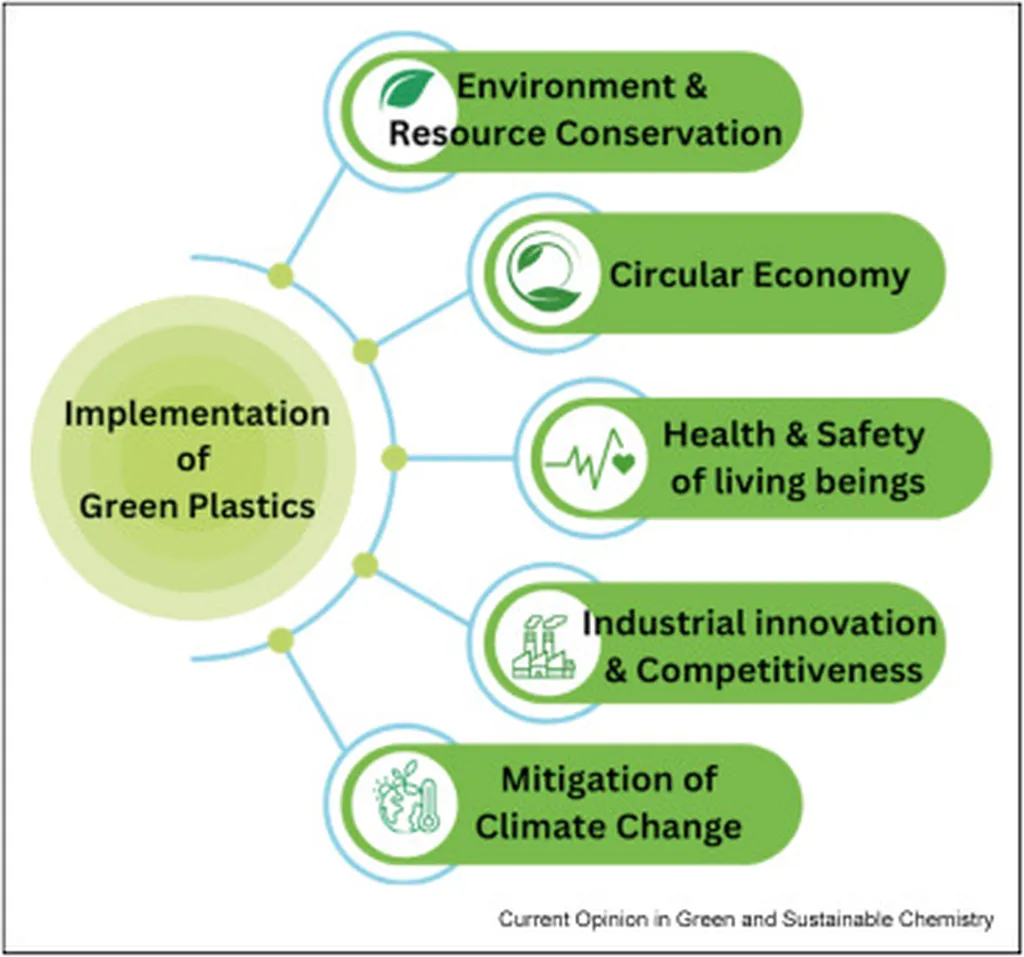In a significant stride towards sustainable industrial practices, researchers have made notable advancements in green polymer nanocomposites (GPNCs), bridging the gap between material innovation and environmental responsibility. This breakthrough, led by Rund Abu-Zurayk from the Hamdi Mango Center for Scientific Research at The University of Jordan, offers promising solutions for various industries, including energy and construction.
The global shift from petroleum-based polymers to more sustainable alternatives has gained momentum, and GPNCs are at the forefront of this transition. These materials combine bio-based or biodegradable polymers with nanoscale reinforcements, enhancing performance while reducing environmental impact. As Abu-Zurayk explains, “The addition of nanofillers can significantly improve the mechanical properties of biodegradable polymers, making them viable for a wide range of industrial applications.”
The research, published in *Frontiers in Materials* (which translates to “Frontiers in Materials” in English), highlights the synthesis methods, structure-property relationships, and industrial applications of GPNCs. Natural polymers like starch, cellulose, chitosan, and alginate, along with bioplastics such as PLA, PHA, PBS, and PCL, offer biodegradability but often lack the mechanical strength required for high-performance applications. However, the incorporation of nanofillers like nanoclays, cellulose nanocrystals (CNCs), nanofibers, biochar, and carbon materials can dramatically enhance their properties.
For instance, the addition of nanofillers has been shown to increase the modulus by 60-70%, while surface-functionalized nanofillers improve interfacial bonding. Hybrid fillers, which blend stiffness with flexibility, can result in a 200% increase in elongation at break. Some metal nanoparticles offer antimicrobial properties, reducing cell viability to less than 10%, and photocatalytic benefits, achieving 100% photocatalytic efficiency. Safety evaluations are carefully conducted to ensure these materials meet regulatory standards.
Advances in fabrication methods, including solution casting, melt compounding, in situ polymerization, electrospinning, and 3D printing, have improved the scalability and distribution of nanofillers within the polymer matrix. These innovations are crucial for high-performance packaging, automotive and aerospace components, construction materials, water treatment membranes, and biomedical devices.
The commercial impacts of this research are substantial. In the energy sector, GPNCs can be used to create lightweight and durable materials for renewable energy infrastructure, reducing the overall environmental footprint. In construction, these materials can be employed for coatings and structural parts, enhancing durability and sustainability. Additionally, GPNCs promote circular economy goals by utilizing waste, reducing energy use, and enabling recyclability or biodegradability.
Despite the promising advancements, challenges remain. The higher costs of bio-polymers and nanofillers, processing complexity, the need for standardized testing, and toxicity concerns for certain nanomaterials are areas that require further attention. However, the ongoing research and development in this field are paving the way for broader industrial adoption.
As Abu-Zurayk notes, “The future of green polymer nanocomposites lies in their ability to blend innovation with environmental responsibility. This research is a crucial step towards achieving a sustainable future, and we are excited about the potential applications and commercial impacts it holds for various industries.”
This groundbreaking research not only highlights the potential of GPNCs but also underscores the importance of continued investment in sustainable materials. As industries strive to meet regulatory demands and consumer expectations for eco-friendly products, GPNCs offer a viable solution that aligns with the principles of the European Green Deal and Extended Producer Responsibility (EPR). The journey towards a greener future is well underway, and GPNCs are poised to play a pivotal role in this transition.

